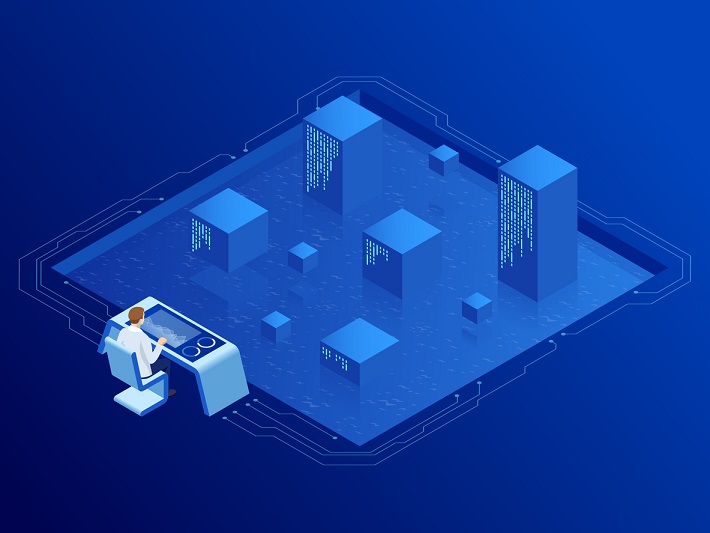ASHB Members the Energy Management Association (EMA) and AABC Commissioning Group (ACG) provide certifications in energy management and commissioning respectively. EMA also represents the building analytic software sector through its Associate Member division. This union provides an essential meeting place for service providers and technical. BuildingFit (EMA Member) and its affiliated commissioning firm ETC Group (ACG Member) have provided multiple webinars and technical presentations to the associations’ members. The implementation and analysis of data produced by building automation systems is often the subject of this training. The topic of this article, dealing with legacy BAS systems, is one often encountered by EMA membership. The author is the President of BuildingFit, a smart building data analytics software company.

I sometimes feel stuck in the past regarding building automation systems (BAS). This is because I hear a consistent grievance from building owners, their engineering staff and service providers who share the same set of problems. While most industries have adopted and are aligned with industry standards relating to IP networking and enterprise data management, building automation is stuck in catch-up mode. Owners understandably want to manage their sites with the latest technologies and information management systems. While many building automation systems (BAS) products are becoming IP-compliant, many existing buildings have older legacy and proprietary BAS systems. This creates big problems for those charged with managing buildings.
The result of this is that applying analytics on building performance, building owners are locked into a cycle of needing to upgrade outdated BAS while knowing that outright replacement and attaining the capital needed to justify ROI are often insurmountable. Many of these BAS are incapable of offering much more than simple trend data and weren’t designed to provide any real operational diagnostics beyond basic alarms.
When BAS Deficiencies are a Legacy
Operators of older, legacy BAS face a major impediment: They’re working with systems that don’t easily share information, generally lack the ability to communicate with other systems, and upgradability is restricted.
These factors in concert, present a common challenge: How to view and use different system source data in one unified software view? Many facility managers try to function in an environment in which they can’t see how each system is performing and how they interoperate. In addition, many of my customers have administrative and compliance reporting requirements that demand real information and analysis about energy, costs, and regulatory compliance. BAS hold much of that, but unfortunately, not in a manner that allows them to access it, let alone actually use it.
Modernizing Legacy BAS: You don’t have to hit “Reset”
So the refrains we hear include: “How do I modernize my legacy systems? And how can I elevate BAS capabilities to get me what I need, while preserving the investments already made?”
Another challenge: How to make necessary upgrades to existing assets that make the data accessible and usable – all without breaking the bank? Serving that data up into a single information and analytics platform is the next step.
Integrating the right data analytics tools to access these insights is a longstanding source of frustration for building managers. Compounding the angst is the advent of Internet of Things (IoT) technologies that offer opportunities for enhancing operational performance but add additional, integration issues.
The result of all this is that building managers are forced to tend to systems individually. It’s wildly inefficient and ineffective as technicians limit their operational scope to a singular system rather than gaining a holistic view of how these systems operate in unison and what adjustments can be made to achieve greater efficiency. No system operates in a vacuum. These systems are interrelated and need to be treated accordingly.
While smart systems are the ideal launching point for building managers to make necessary adjustments within their facility operations, this isn’t sufficient to provide the insights into how, where, or when to integrate such improvements. Building managers need systems that communicate seamlessly and display essential data in a uniform and meaningful manner.
Standardization is the Key to the BAS Castle
The good news is recent advances are lowering barriers to implementing analytics. In days gone by, building systems were simply gathers of data, making it available for facility managers to analyze. The problem is that each data set tends to speak its own language. While it may be easier to access the information today, building managers are missing the ability to review it unitarily and use common metrics to make impactful decisions.
Thankfully, significant progress has been made to solve this problem. A great example is the Haystack schema that aims to standardize semantic data models and simplify interpretation of data collected across operational systems. Professional analytics tools, like my company’s BuildingFit™, have further demystified the puzzle of how to achieve greater energy efficiency through technological features. For example, the BuildingFit preferencing tool is powerful because it uses machine learning to standardize diverse data across different platforms. This approach normalizes data points to enable “apples-to-apples” comparisons, ultimately unifying system data into easy to understand insights.
This approach to standardize data and analytics helps facility management make smarter decisions and make them faster. As an example, it enabled Banner Health to leverage facility data that yielded a cost savings of $3.8 million in annual energy savings across a multitude of facilities.
Leveraging Service Providers and the Secure Cloud
Enlightened facility managers are taking advantage of two market trends to accelerate the successful implementation of smart building technologies. Many are realizing a quick and effective way to adopt analytics in their facilities is partnering with competent service providers with a focus on providing building analytics solutions. Innovative energy engineering, commissioning, and systems integrators, in turn, are providing data analytics as a core service offering. Meantime, enhanced security software tools allow cloud access to dashboards and building data that keeps information secure while providing increased access to building operations across geographies and diverse team members.
SaaS Lowers Barriers
There are significant benefits by working with an analytics vendor with a software as a service (SaaS) model. With SaaS, instead of paying for expensive, upfront licensing costs, users pay a lower subscription fee. With software costs spread over time, users see a much faster ROI. This model offers other benefits, such as automatic and easy software upgrades and improvements, which are usually included with the subscription. Many of the barriers of implementing data analytics software are simply removed with SaaS.
Getting it Right
Looking into the future of smart systems and buildings, the myth that needs busted is that meaningful data analysis requires individualized attention to each facility system. To get it right, the appropriate software platform that proactively standardizes the data collected across systems to make analysis more readily decipherable and actionable must be chosen. Those that recognize this will reap significant benefits later.
It’s not our technology that’s trapped in the 20th Century. The good news is, we already have an established path to success. We can overcome the lack of standardization surrounding BAS technologies and the data they present that make us feel like we are still dreading the Y2K bug. If you follow the model of embracing a standardized approach to data analytics, leverage service providers, and rely on the secure cloud, building managers can effectively modernize legacy systems and make more decisive and cost effective decisions in their facilities.
 Rob Glance is the President of BuildingFit™, a smart building data analytics software company. With more than 20 years of experience in energy engineering and management in information technology, Glance has dedicated his professional career to problem solving through smart technologies and bringing better building management solutions to engineering firms, controls contractors, service providers, and more.
Rob Glance is the President of BuildingFit™, a smart building data analytics software company. With more than 20 years of experience in energy engineering and management in information technology, Glance has dedicated his professional career to problem solving through smart technologies and bringing better building management solutions to engineering firms, controls contractors, service providers, and more.

